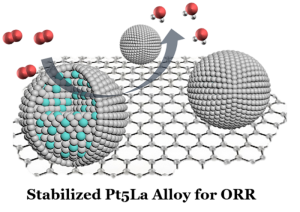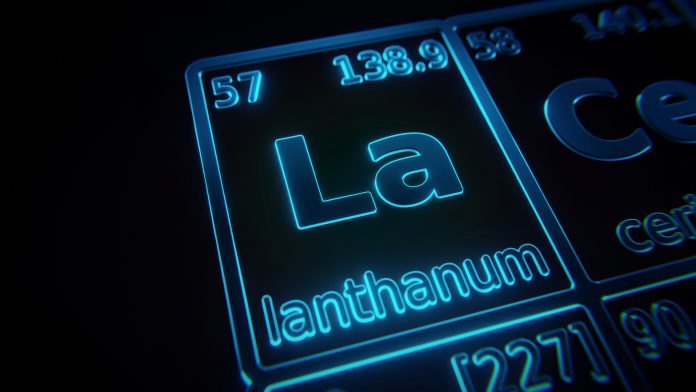Scientists have pioneered a method for developing catalysts for next-generation fuel cells using a rare earth element (REE) known as lanthanum.
The team has developed a novel technique for amalgamating high-cost platinum and low-cost lanthanum to create an alloy that works as a catalyst for advanced fuel cells. The innovation will not only reduce the costs and increase the performance of fuel cell technology, but also enable the decarbonisation of heavy transport vehicles that are less amenable to the use of battery power.
Limitations of current fuel cells
Batteries are currently the premier technology for powering cars; however, hydrogen fuel cells offer an effective zero-emission alternative for types of transport that find it difficult to swap combustion engines for batteries, such as the weight and volume of batteries required. This is especially true for heavy transport such as aviation, shipping, and long-haul trucking.
Fuel cells power machines and vehicles by converting the chemical energy of hydrogen into electricity, with the only outputs being water and heat. The most common type of fuel cell used is the alkaline fuel cell – invented almost a century ago. However, future technology will likely resemble a Polymer Electrolyte Membrane Fuel Cell that employs hydrogen to generate electricity whilst being more compact, making it more desirable for heavy transport vehicles.
Improving catalyst design
To make electrochemical reactions more efficient and reduce the cost of fuel cells to make them competitive with fossil fuels, better catalysts that can speed up these reactions are critical. The challenge is that of all these electrocatalysts that make the chemical reaction possible, platinum is the best and is a scarce and expensive metal. For proton-exchange membrane fuel cells (PEMFCs), the high cost of platinum has been a significant barrier to their uptake.
Siyuan Zhu, one of the authors of the paper and an electrochemist with the Changchun Institute of Applied Chemistry at the Chinese Academy of Sciences, said: “So the hunt is on for an electrocatalyst that is low-cost, more resistant to degradation, and thus stable over longer periods, while also delivering impressive current density—in other words, the amount of electrical current per unit of volume and so enabling us to keep the promise of the compactness of PEMFCs.”
A promising way to reduce the costs is by diluting the amount of platinum required to create the electrocatalyst by alloying it with an additional, cheaper metal that could even boost its catalytic properties.
Exploring transition metals
Until now, the primary candidates for alloying with platinum are late transition metals – elements located in the middle of the periodic table. Transition metals include iron, manganese, and chromium and late transition metals comprise elements such as cadmium and zinc.
Nevertheless, late transition metals are susceptible to dissolution in the corrosive PEMFC environment, resulting in declining performance and uncontrollable damage to the entire system as the dissolved metal further reacts with the byproducts of the oxygen reduction reaction.
In contrast, early transition metals, such as yttrium and scandium, are much more stable, with theoretical calculations demonstrating that alloys of platinum and these two early transition metals are stable. One group of these early transition metals – rare earth elements – has so far been overlooked.
Rare earths can significantly boost the electrochemical activity of catalysts, but the problem so far is their poor conductivity and solubility in acidic media. Theoretically, these can be overcome by using synthetic methods for the production of a platinum-REE alloy, but until now, there have been few reports of any feasible synthetic methods.
Lanthanum-powered fuel cells
To test the potential of REEs, the researchers developed a technique that involves two simple steps. First, the team acquired regularly available lanthanum salts and trimesic acid, which self-assembled into nano-scale ‘rods’. These were then infused with platinum at 900°C.
Next, they stress-tested the resulting platinum-lanthanum nanoparticles in fuel cells, surpassing the researchers’ expectations by achieving superior stability and activity even after 30,000 fuel cell cycles.

Due to the study’s success, the researchers are now aiming to explore other REEs to alloy with platinum to see if they can exceed lanthanum’s electrocatalytic performance.









